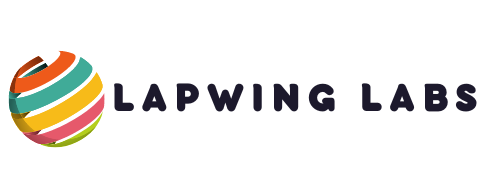In today’s digital world, advanced threats are becoming increasingly complex and harder to detect. Cybercriminals are using sophisticated tactics, making it difficult for organizations to defend their networks. To stay ahead of these threats, businesses need to invest in the right tools for detecting and preventing cyber attacks.
Threat intelligence tools are essential for detecting advanced threats that could otherwise go unnoticed. These tools gather, analyze, and provide actionable information about emerging threats, enabling security teams to act before damage is done. In this article, we’ll explore some of the most effective threat intelligence tools for detecting advanced threats and how they can help keep your organization safe.
What Are Threat Intelligence Tools?
Before diving into the specifics, it’s crucial to understand what threat intelligence tools are. These tools are software solutions designed to collect, analyze, and present data on potential cyber threats. The data might include information on attack methods, malware behavior, and the tactics used by cybercriminals. By providing these insights, threat intelligence tools enable organizations to detect and respond to advanced threats more swiftly. With them, security teams can stay one step ahead, preventing breaches and minimizing the impact of attacks. Some of the leading threat intelligence tools offer powerful capabilities for real-time monitoring and advanced analytics, making them indispensable for modern cybersecurity efforts.
Key Features of Effective Threat Intelligence Tools
Not all threat intelligence tools are created equal. The best tools share a few key characteristics:
- Real-time data: Advanced threats often evolve quickly. To effectively detect and counter them, tools must provide real-time threat intelligence.
- Actionable insights: It’s not enough to simply identify threats. The data provided must be actionable, allowing security teams to take immediate action.
- Automation: Effective tools automate threat detection and analysis, allowing security teams to focus on responding rather than collecting and processing data.
- Integration: A good threat intelligence tool integrates seamlessly with other security systems, like firewalls, SIEMs (Security Information and Event Management), and endpoint protection platforms.
With these features in mind, let’s explore some of the top threat intelligence tools that can help detect advanced threats.
1. CrowdStrike Falcon
CrowdStrike Falcon is a cloud-native endpoint protection platform that uses threat intelligence to detect and prevent advanced threats. It provides real-time visibility into endpoint activities and offers advanced detection capabilities powered by artificial intelligence (AI).
CrowdStrike’s AI-driven threat intelligence analyzes vast amounts of data to detect unknown threats, including zero-day attacks, fileless malware, and advanced persistent threats (APTs). The platform also offers automated response capabilities, allowing organizations to take immediate action if an attack is detected.
CrowdStrike is widely regarded as one of the most effective tools for preventing advanced threats. Its combination of real-time intelligence and AI-based detection sets it apart from many other tools on the market.
2. FireEye Threat Intelligence
FireEye is another leading player in the field of threat intelligence. Its platform offers a comprehensive suite of tools for detecting, analyzing, and responding to advanced threats. FireEye’s threat intelligence is powered by data collected from its global network of sensors, which monitor networks, endpoints, and email traffic for signs of malicious activity.
One of FireEye’s key strengths is its ability to identify zero-day exploits and advanced malware campaigns. The platform offers detailed reports and alerts, enabling organizations to respond to threats swiftly. FireEye also provides managed services, allowing businesses to outsource their threat intelligence and incident response efforts to experts.
3. ThreatConnect
ThreatConnect is a powerful threat intelligence platform that helps organizations detect, analyze, and respond to advanced threats. It provides a centralized hub for collecting and sharing threat data, allowing security teams to collaborate more effectively.

One of the standout features of ThreatConnect is its ability to aggregate data from various sources, including internal systems, external threat feeds, and open-source intelligence (OSINT). This comprehensive approach allows security teams to get a complete view of the threat landscape, making it easier to detect and respond to advanced threats.
ThreatConnect also integrates with other security systems, such as SIEMs and firewalls, enabling automated responses to detected threats. With its advanced analytics and robust reporting features, ThreatConnect is one of the most effective tools for detecting and mitigating cyber threats.
4. IBM X-Force Threat Intelligence
IBM X-Force Threat Intelligence is a comprehensive solution that provides real-time threat data and analysis to help organizations defend against advanced threats. IBM’s platform leverages a vast amount of data collected from its global network of sensors and security experts.
X-Force’s intelligence feeds include information on malware, vulnerabilities, phishing campaigns, and other threats. The platform also offers advanced analytics tools that help security teams identify patterns and trends in the data, making it easier to spot emerging threats.
IBM X-Force is known for its detailed and actionable threat intelligence, making it an excellent choice for businesses looking to stay ahead of cybercriminals. The platform’s integration with other IBM security solutions further enhances its effectiveness in detecting advanced threats.
5. Anomali Threat Intelligence Platform
Anomali is a popular threat intelligence platform that helps organizations detect, analyze, and respond to advanced threats. It offers a variety of tools and integrations that enable security teams to gather and analyze data from multiple sources, including internal logs, external threat feeds, and OSINT.
Anomali’s platform is particularly useful for organizations that want to enrich their security operations with external threat data. It integrates with a wide range of third-party tools, such as SIEMs, firewalls, and intrusion detection systems (IDS), making it easier to correlate and act on threat intelligence.
The platform also includes machine learning capabilities that help detect and predict emerging threats, allowing organizations to stay one step ahead of cybercriminals. Anomali’s detailed reporting and visualizations make it easy for security teams to understand complex threat data and take action accordingly.
6. AlienVault USM
AlienVault Unified Security Management (USM) is a comprehensive security platform that combines threat intelligence with other security features, such as asset discovery, vulnerability assessment, and intrusion detection. AlienVault’s threat intelligence is powered by the Open Threat Exchange (OTX), a community-driven platform that collects and shares data on emerging threats.
USM provides real-time monitoring and alerts, helping organizations detect advanced threats in their networks. The platform also includes automated response capabilities, allowing security teams to take immediate action when a threat is identified.
AlienVault’s integration with other security tools and its ability to provide actionable threat intelligence make it a great option for businesses looking to enhance their security posture.
7. Recorded Future
Recorded Future is a cutting-edge threat intelligence platform that uses machine learning and natural language processing (NLP) to analyze vast amounts of data and identify emerging threats. The platform collects data from a wide range of sources, including the dark web, social media, and public websites, providing a comprehensive view of the threat landscape.
Recorded Future’s advanced analytics capabilities help security teams detect threats before they cause damage. The platform’s integration with other security systems, such as SIEMs and firewalls, allows for automated responses to detected threats.

With its focus on actionable intelligence and its ability to predict future threats, Recorded Future is a powerful tool for organizations looking to stay ahead of cybercriminals.
8. Leading Threat Intelligence Tools for Enterprise Security
When it comes to selecting the most effective threat intelligence tools, there’s no one-size-fits-all solution. The best tools for your organization will depend on your specific needs, existing infrastructure, and the types of threats you’re most likely to face. That said, tools like CrowdStrike, FireEye, ThreatConnect, and IBM X-Force stand out as some of the most effective for detecting advanced threats. These platforms offer real-time intelligence, automated detection, and comprehensive analysis capabilities that can help you stay ahead of evolving threats.
In conclusion, threat intelligence tools are a vital part of any organization’s cybersecurity strategy. By using these tools, businesses can detect and respond to advanced threats more quickly, reducing the risk of a successful attack. Whether you’re a small business or a large enterprise, investing in the right threat intelligence platform is an essential step in securing your digital assets.



